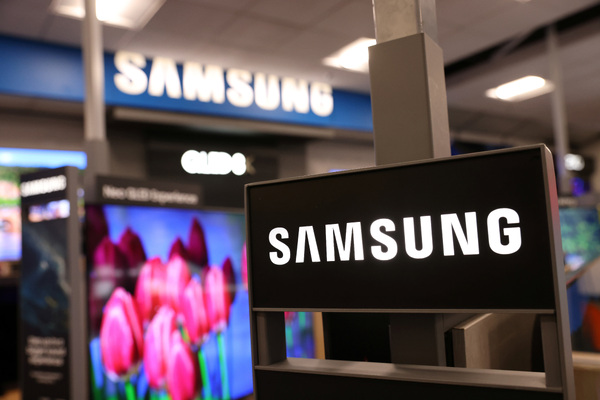Managing retail fraud

Monica Eaton at Chargebacks911 explores the new frontiers of retail fraud
Although digital fraud gets the lion’s share of the headlines, retail theft is still the most damaging form of crime targeting merchants. Just look at the numbers: UK financial fraud is worth £1.2 billion while retail theft—which can encompass anything from shoplifting to theft from distribution centres—costs the country £7.9 billion.
So-called organised retail theft has made the headlines recently after the British Retail Consortium and Association of Convenience stores sent a letter to every police and crime commissioner in England and Wales asking for help with an unprecedented level of shoplifting, including organised looting.
The reason for this alarming spike in retail theft is rather straightforward: in an economy where the costs of living are rising, an increasing number of people will turn to theft and fraud to make ends meet. In addition to declining sales due to decreased demand, this unfortunate trend has a detrimental, unforeseen impact on merchants’ bottom lines. The visibility of these thefts—commonly referred to as ’shrinkage’—is undeniable.
With images of individuals bolting out of stores with armfuls of stolen goods making their way into news articles, there exists more insidious forms of fraud that are far less conspicuous.
These covert activities, known as ‘retail fraud,’ pose a significant challenge to retailers, as they are often difficult, if not impossible, to detect during routine operations. It is imperative for businesses to be not only aware of these subtler forms of fraud but also equipped with strategies and tactics to combat them effectively.
The varieties of retail fraud
While shoplifting is a more direct form of stealing from retailers, retail fraud is often more complex, which means that the criminals who carry it out expect higher returns and will be more competent and organised.
Retail fraud is rapidly expanding its reach, with more sophisticated ploys aimed to leverage opportunities to steal data, not just merchandise. For example, skimming devices and RFID readers can surreptitiously capture card information, allowing fraudsters to make unauthorised transactions.
Gift card fraud is also a growing concern for both retailers and consumers. Criminals use various tactics, such as stealing activation codes by hacking a retailer’s gift card database or manipulating the cards themselves to drain the funds before the rightful owner can use them.
Retailers need to implement secure activation and purchasing processes for gift cards, and customers should be educated on how to protect themselves from falling victim to gift card fraud.
This is not to say that there aren’t extremely simple forms of retail fraud that shoppers might carry out on a whim, like swapping the price tags of items or exploiting lenient return policies, often returning stolen merchandise or using counterfeit receipts to receive refunds. Implementing stricter return policies, applying unique stickers to receipts, or requiring identification during returns, can aid in mitigating these forms of fraud.
Chargeback fraud, or “friendly fraud,” is a complex and evolving challenge for online retailers. Fraudsters exploit the chargeback process by making false claims about products or services, leading to unwarranted chargebacks and financial losses for businesses. They can, for example, claim that a charge on their card is fraudulent or, if a product is being shipped, say that the delivery never arrived, allowing them to receive a full refund and keep the product.
There are over 100 reasons criminals can use creatively to file a claim and receive a refund from their bank whilst keeping the merchandise, and to date; no penalty or infraction exists for this crime – logically attributing to its growth rates in attracting retail fraud criminals. Estimations reported by Visa last year represent this type of retail fraud has climbed to figures, up to $173M per year.
Education and prevention
Educating consumers about defence options designed to safeguard their wallet from fraud, is the first step. Consumers should be aware of their rights as a card holder and the consumer protection mechanisms available – both by their card scheme as well as nationally (i.e., Section 75 and other government sponsored protection funds).
Equally, both consumers and retailers should ensure they maintain consistent privacy protection standards, following the most up-to-date industry recommendations. The fraud problem is ever-evolving and taking responsibility to obtain important updates and relevant insights, is key.
Retailers with clear communication regarding return policies, product descriptions, and customer support channels can reduce the likelihood of customers resorting to unwarranted chargebacks. By fostering transparency and trust, retailers can build stronger relationships with their customer base while minimising the risk of chargeback fraud.
As the landscape of retail fraud continues to evolve, businesses must adapt and fortify their defences. One such way is to ally themselves with the right experts that specialise in comprehensive chargeback management solutions (one of the only methods to obtain fraud insights and determine the emanating source of retail fraud).
Given the various growth trends across multiple channels, platform solutions that employ a multi-layered approach to detect and prevent chargeback fraud coupled with bench-marking insights and expert guidance, are positioned to deliver the best results.
Today’s retail fraud problem is a data problem, not isolated to humans. Without the right federation of data to navigate the complexities of chargeback disputes, retailers are likely to continue targeting the wrong suspect – inadvertently widening the gap for criminals to exploit.
While the headlines may often focus on dramatic instances of shoplifting, the realm of retail fraud extends far beyond these conspicuous acts. From chargeback fraud to return fraud, retailers face a myriad of challenges that demand vigilance and proactive measures.
By staying informed about emerging threats and having the right expertise, businesses can better protect themselves from the financial fallout of retail fraud, ensuring a more secure and resilient future for the retail sector.
Monica Eaton is the Founder and CEO of Chargebacks911 which has successfully protected more than 10 billion online transactions and has recovered over $1 billion in chargeback fraud
Main image courtesy of iStockPhoto.com

Business Reporter Team
Most Viewed
23-29 Hendon Lane, London, N3 1RT
23-29 Hendon Lane, London, N3 1RT
020 8349 4363
© 2024, Lyonsdown Limited. Business Reporter® is a registered trademark of Lyonsdown Ltd. VAT registration number: 830519543





